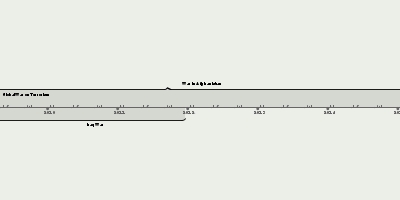13 дек 2003 г. - Operation Red Dawn
Описание:
Between July and December 2003, JSOC's Task Force 121—an elite and covert joint special operations team, supported by the 1st Brigade Combat Team (led by Colonel James Hickey) of the 4th Infantry Division, commanded by Major General Raymond Odierno—carried out twelve unsuccessful raids to find the deposed president of Iraq, Saddam Hussein. Together with 600 other operations against targets, including 300 interrogations. On 1 December 1st, 2003, a former driver divulged the name Muhammed Ibrahim Omar al-Musslit, Saddam's comrade, known to TF 121 as "the source" or "the fatman". Over the next two weeks, nearly 40 members of his family were interrogated to ascertain his location. On December 12th, 2003, a raid on a house in Baghdad that was being used as an insurgent headquarters captured Omar. Early the next morning he revealed where Saddam may be found. This intelligence and other intelligence from detained former members of the Ba'ath Party, supported by signals intelligence from the ISA, finally pinpointed Saddam at a remote farm compound south of Tikrit.Operation Red Dawn, named after the 1984 American film Red Dawn, was launched after gaining actionable intelligence identifying two likely locations of Saddam's whereabouts code-named "Wolverine 1" and "Wolverine 2", near the town of ad-Dawr. C squadron Delta Force, ISA operators under Task Force 121, and the 1st Brigade Combat Team of the 4th Infantry Division conducted the operation. The site names "Wolverine 1" and "Wolverine 2" are also a reference to the American insurgent group in the film. The forces involved in the operation consisted of approximately 600 soldiers including cavalry, artillery, aviation, engineer, and special operations forces.
The forces cleared the two objectives but initially did not find the target. Then, as the operators were finishing and the helicopters called in to extract them, one soldier kicked a piece of flooring to one side, exposing a spider hole; he prepared to throw a grenade into it – in case it led to an insurgent tunnel system – when suddenly Saddam appeared. The soldier struck him with the stock of his M4 carbine and disarmed him of a Glock 18C.
Saddam surrendered and offered no resistance; he was taken by an MH-6 Little Bird from the 160th SOAR to the Tikrit Mission Support Site where he was properly identified. He was then taken in an MH-60K Blackhawk helicopter by 160th SOAR from Tikrit to Baghdad and into custody at Baghdad International Airport. Along with the Glock, an AK-47 and $750,000 in U.S. bank notes were recovered from the spider hole. Two other individuals were also detained.
Following the capture of Hussein, the 4th Infantry Division's area of operations in the upper Tigris saw its "first period of real calm." Combined Joint Task Force 7 (CJTF-7) also saw IED attacks reduce by 39 percent. The perceived security improvements led to CJTF-7 and the CPA to adopt an optimistic outlook as 2003 ended. CJTF-7 believed that the capture of Saddam and his money heralded the defeat of the former regime insurgency. Using documents and materials captured as a result of the operation, CJTF-7 units pursued "what they believed were the last vestiges of the former Ba'athist resistance."
Добавлено на ленту времени:
Дата:
13 дек 2003 г.
Сейчас
~ 21 г назад
